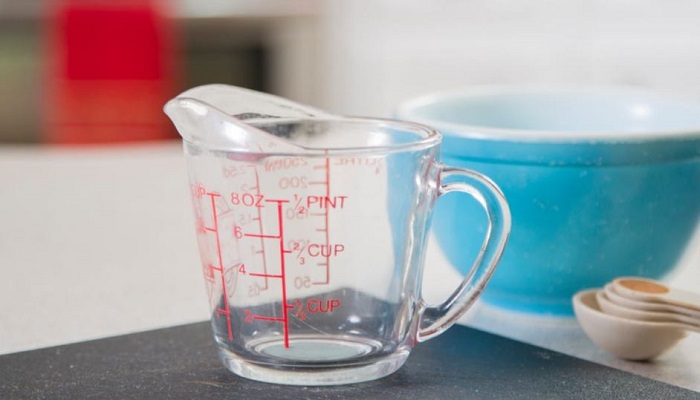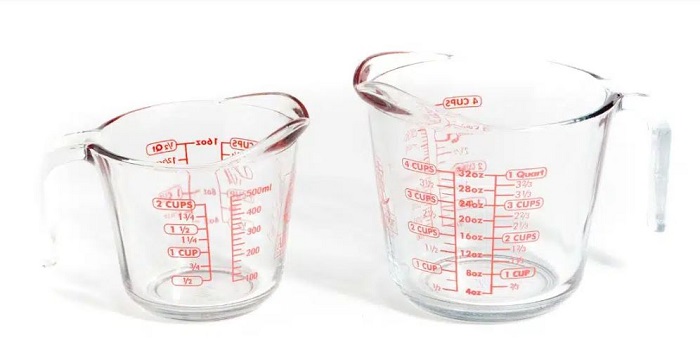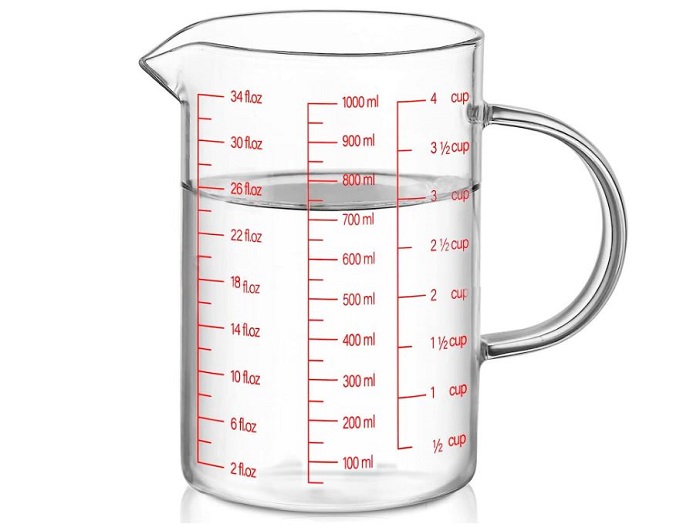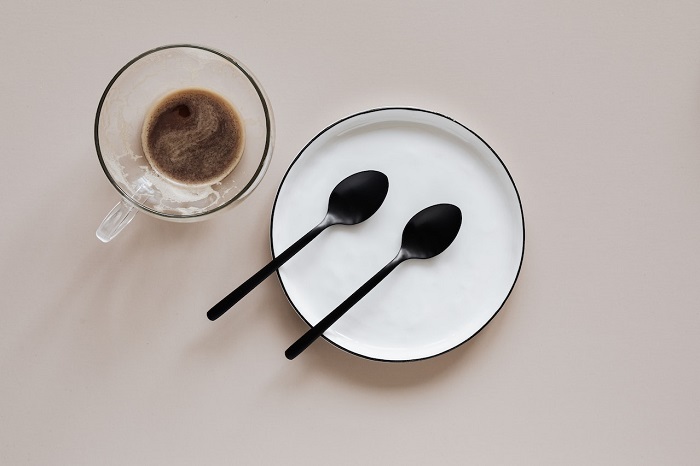HOW MANY TABLESPOONS IN 100 ML? GOOD TIPS AND GUIDES IN 2024.
How Many Tablespoons in 100 ml: A Conversion Guide.
Unlocking culinary secrets often starts with precise measurements. Whether you’re a seasoned chef or an enthusiastic home cook, understanding measurement conversions is a fundamental skill in the kitchen. The ability to convert between different units of measurement allows you to follow recipes accurately and experiment with flavors and textures confidently.
In this article, we delve into one such common conversion: “How many tablespoons in 100 ml?” Tablespoons and milliliters are widely used units in the culinary world, and knowing how to convert between them can make a significant difference in the outcome of your dishes.
Join us as we explore the precise conversion ratio between tablespoons and milliliters and learn how this knowledge can elevate your cooking game to a new level of precision and creativity.
Whether you’re baking a delectable cake, preparing a savory sauce, or brewing the perfect cup of coffee, understanding the relationship between these two measurements will prove to be an indispensable asset in your culinary journey.
Let’s dive in and uncover the secrets of converting 100 ml to tablespoons!

HOW MANY TABLESPOONS IN 100 ML?
1. WHAT IS TABLESPOONS?
A tablespoon is a unit of volume commonly used in cooking and culinary measurements. It is abbreviated as “tbsp” or “T” and is a part of the imperial and metric systems of measurement. The tablespoon is often employed to measure ingredients like liquids, powders, and small solid items such as sugar, salt, or spices.
In the United States and some other countries, one tablespoon is equivalent to approximately 14.79 milliliters (ml) in the metric system. However, it’s important to note that the tablespoon’s size may vary in different regions, leading to slight discrepancies in measurements.
When following recipes, it’s crucial to use the appropriate tablespoon measurement as specified in the context of the country or region of the recipe’s origin. This ensures accurate results and consistency in your culinary endeavors.
If you’re curious about converting between tablespoons and milliliters, as mentioned in your article’s title, I’d be happy to provide the conversion ratio specific to your region of interest. Just let me know which country’s measurement system you’d like to use!
You can see How Many Tablespoons in 100 ml as below.
2. WHAT IS MILLILITER (ML)?
A milliliter (ml) is a unit of volume in the metric system. It is commonly used to measure small quantities of liquids and is equivalent to one-thousandth of a liter. The milliliter is abbreviated as “ml.”
In the metric system, the liter is the base unit for measuring volume, and it is used to measure larger quantities of liquids. A liter contains 1,000 milliliters. Therefore, when you have 1 liter of liquid, it is the same as having 1,000 milliliters of that liquid.
The milliliter is widely used in various fields, including cooking, medicine, chemistry, and everyday measurements of liquids such as water, milk, and cooking oils. In recipes, you’ll often encounter measurements in milliliters, especially in countries that use the metric system as their standard unit of measurement.
For conversion purposes, knowing that 1 milliliter is equal to one-thousandth of a liter makes it convenient to convert larger volumes to smaller, more manageable quantities. If you encounter a recipe that specifies measurements in milliliters, it’s essential to use precise measuring tools to achieve accurate results in your cooking or other applications.
You can refer How Many Tablespoons in 100 ml as below.
3. HOW MANY TABLESPOONS IN 100 ML?
The conversion of milliliters (ml) to tablespoons varies depending on the country or region because tablespoons come in different sizes. However, as a general guideline:
1 milliliter (ml) is approximately equal to 0.067628 tablespoons (tbsp).
To find out how many tablespoons are in 100 ml, you can use this approximation:
100 ml * 0.067628 tbsp/ml ≈ 6.7628 tablespoons (tbsp)
So, approximately, there are 6.76 tablespoons in 100 ml.
Keep in mind that this is an approximate conversion, and the actual tablespoon size can vary slightly depending on where you are. If precision is crucial for your recipe, it’s always best to refer to a specific conversion table or use a measuring spoon to get the most accurate results.
Please see How Many Tablespoons in 100 ml as above.
4. HOW MANY TABLESPOONS IN 50 ML?
To convert milliliters (ml) to tablespoons (tbsp), we can use the approximation provided earlier:
1 milliliter (ml) is approximately equal to 0.067628 tablespoons (tbsp).
Now, to find out how many tablespoons are in 50 ml:
50 ml * 0.067628 tbsp/ml ≈ 3.3814 tablespoons (tbsp)
So, approximately, there are 3.38 tablespoons in 50 ml.
Again, please note that this is an approximate conversion, and the actual tablespoon size can vary slightly depending on your location. For precise measurements, it’s always best to use a measuring spoon or refer to a specific conversion table.
Please refer How Many Tablespoons in 100 ml as above.
5. HOW MANY CUPS IS 10 TABLESPOONS?
To convert tablespoons (tbsp) to cups, we can use the following conversion:
1 cup is equal to 16 tablespoons (tbsp).
Now, to find out how many cups are in 10 tablespoons:
10 tbsp ÷ 16 tbsp/cup ≈ 0.625 cups
So, 10 tablespoons are approximately equal to 0.625 cups.
Keep in mind that this is an approximate conversion since the actual size of a tablespoon can vary slightly depending on your location. For precise measurements, it’s always best to use standard measuring cups and spoons.
There are How Many Tablespoons in 100 ml as above.
6. HOW MANY OUNCES IS 100 ML?
To convert milliliters (ml) to fluid ounces (fl oz), you can use the following conversion:
1 milliliter (ml) is approximately equal to 0.033814 fluid ounces (fl oz).
Now, to find out how many fluid ounces are in 100 ml:
100 ml * 0.033814 fl oz/ml ≈ 3.3814 fluid ounces (fl oz)
So, approximately, 100 ml is equal to 3.38 fluid ounces.
Please note that this is an approximate conversion, and the actual conversion factor may vary slightly depending on the specific conversion used. For precise measurements, it’s best to use a measuring cup or consult a conversion chart.
Above is information about How Many Tablespoons in 100 ml. Now, let’s see some tips and guides on calculation How Many Tablespoons in 100 ml as below.
TIPS AND GUIDES ON CALCULATION HOW MANY TABLESPOONS IN 100 ML.

1. SOME TIPS ON CALCULATION HOW MANY TABLESPOONS IN 100 ML.
Here are some tips to help you calculate how many tablespoons in 100 ml:
- Use the Approximate Conversion: As mentioned earlier, you can use the approximate conversion of 1 milliliter (ml) being approximately equal to 0.067628 tablespoons (tbsp). This gives you a quick estimate for conversions.
- Use a Conversion Chart: You can create or find a conversion chart that lists common measurements for tablespoons and milliliters. Having this chart handy will make it easy to look up conversions without needing to calculate each time.
- Remember the Basic Conversion: In some regions, a standard tablespoon is often considered to be about 15 ml. In this case, 100 ml is roughly 6.67 tablespoons. This can help you make a quick mental estimate without using decimals.
- Round to the Nearest Half or Whole Number: When precision isn’t critical, you can round the conversion to the nearest half or whole number. For example, 0.067628 can be rounded to approximately 0.07 or 0.07 can be rounded to 0.5.
- Use Common Measuring Tools: If you have measuring spoons and cups, you can directly measure out 100 ml and then see how many tablespoons it corresponds to. This way, you get an accurate measurement without any calculations.
- Practice Makes Perfect: With time and practice, you will become more familiar with common measurement conversions, making it easier for you to estimate or calculate accurately.
Remember that these tips provide approximate conversions. For more precise measurements, especially in recipes, it’s best to use specific measuring tools, especially when baking or cooking dishes that require precise ingredient amounts.
We introduce How Many Tablespoons in 100 ml as above.
2. WHAT IS 100ML IN TABLESPOONS UK?
In the United Kingdom, the conversion of milliliters (ml) to tablespoons (tbsp) is slightly different from the US conversion. In the UK, one tablespoon is commonly considered to be equal to 15 milliliters (ml).
So, to find out how many tablespoons are in 100 ml in the UK:
100 ml ÷ 15 ml/tbsp = 6.67 tablespoons (tbsp)
Approximately, there are 6.67 tablespoons in 100 ml in the UK.
Again, please keep in mind that these conversions are approximate, as tablespoon sizes can vary slightly in different regions. For precise measurements, it’s best to use measuring spoons designed for the specific region you are in or follow the measurements given in the recipe.
You can see How Many Tablespoons in 100 ml as above.
3. WHAT IS 1 TABLESPOON EQUAL TO IN ML?
In most countries, including the United States and Canada, 1 tablespoon (tbsp) is equal to approximately 14.79 milliliters (ml). This is the standard conversion used in many recipes and culinary measurements.
However, in the United Kingdom and some other countries, 1 tablespoon is commonly considered to be equal to 15 milliliters (ml).
Due to this slight difference, it’s essential to be aware of the country or region the recipe originates from when using tablespoon measurements. Using the correct conversion will ensure accurate results in your cooking and baking endeavors. If you have specific recipes, it’s best to check if the tablespoon measurement is based on the US or UK standard to use the appropriate conversion.
You can refer How Many Tablespoons in 100 ml as above.
4. HOW MANY CUPS IS IN 500ML?
To convert milliliters (ml) to cups, you can use the following conversion:
1 cup is equal to 236.59 milliliters (ml).
Now, to find out how many cups are in 500 ml:
500 ml ÷ 236.59 ml/cup ≈ 2.1134 cups
So, approximately, 500 ml is equal to 2.11 cups.
Keep in mind that this is an approximate conversion, and the actual conversion factor may vary slightly depending on the specific conversion used. For precise measurements, it’s best to use standard measuring cups.
Please see How Many Tablespoons in 100 ml as above.
5. WHAT IS THE DIFFERENCE BETWEEN OUNCES (OZ.) AND ML?
The main difference between ounces (oz.) and milliliters (ml) lies in their units of measurement and the systems in which they are used:
- Unit of Measurement:
- Ounces (oz.): Ounces are a unit of volume used primarily in the United States customary system and the British imperial system. There are two types of ounces: fluid ounces (fl oz) used for measuring volume of liquids and dry ounces (oz) used for measuring weight of dry ingredients.
- Milliliters (ml): Milliliters are a unit of volume used in the metric system, which is the standard system of measurement in most countries worldwide. Milliliters are used to measure volume, primarily for liquids, but also for other substances like powders.
- Volume Conversion:
- For fluid ounces to milliliters (fl oz to ml) conversion, 1 fluid ounce is approximately equal to 29.5735 milliliters.
- For dry ounces to milliliters (oz to ml) conversion, the relationship between weight and volume varies depending on the density of the substance being measured, so it’s not a straightforward conversion.
- Application:
- Ounces (fluid ounces) are commonly used in the United States for measuring liquids in recipes, beverages, and other fluid quantities.
- Milliliters are widely used in the metric system across the world, making them a more universal unit of volume measurement used in cooking, baking, pharmaceuticals, scientific research, and many other applications.
- Precision:
- Milliliters provide a more precise measurement for volume, especially when dealing with smaller quantities, due to the decimal nature of the metric system.
- Fluid ounces can lead to slightly less precise measurements, especially when dealing with smaller volumes, as they are based on a fractional system.
It’s essential to be aware of the units used in recipes or any other measurements to ensure accurate conversions. If you come across recipes or measurements from different regions, you may need to convert between fluid ounces and milliliters using the appropriate conversion factor for the specific type of ounce (fluid or dry) and the type of ingredient being measured.
Please refer How Many Tablespoons in 100 ml as above.
6. SHOULD I USE MEASURING CUPS OR SCALES?
Whether you should use measuring cups or scales depends on the type of ingredients you are measuring and the level of precision required for your recipe. Both measuring cups and kitchen scales have their advantages, and the choice often comes down to the specific needs of your cooking or baking process.
Measuring Cups:
- Advantages: Measuring cups are simple to use and widely available. They are excellent for measuring liquid ingredients like water, milk, oil, or other fluids. Many measuring cups have clear markings, making it easy to read the measurements accurately.
- Best for: Measuring cups are most suitable for liquid ingredients and some dry ingredients that are not sensitive to volume variations, like granulated sugar, salt, and some flours.
Kitchen Scales:
- Advantages: Kitchen scales provide precise measurements in weight, which can be especially beneficial for certain baking recipes where accuracy is crucial. They allow you to measure ingredients like flour, sugar, and other dry goods more precisely, leading to consistent and reliable results.
- Best for: Kitchen scales are ideal for measuring dry ingredients, especially when the recipe calls for weight measurements. This is particularly important in baking, where slight variations in the amount of flour, for example, can significantly affect the outcome of the final product.
Combination Approach: In some cases, using both measuring cups and scales can be the most advantageous approach. For instance, you might use measuring cups for liquids and certain non-sensitive dry ingredients, while relying on a scale for more precise measurements of other dry ingredients. This combination ensures a balance between ease of use and accuracy.
Personal Preference and Recipe Requirements: Ultimately, your choice between measuring cups and scales will depend on your personal preference, the nature of the recipe, and the level of precision demanded. Many professional bakers and chefs prefer using scales for their versatility and accuracy, while others find measuring cups perfectly adequate for most of their needs.
In conclusion, both measuring cups and scales are valuable tools in the kitchen, and the best approach is to understand the strengths of each and choose the appropriate one based on the specific requirements of your cooking or baking project.
There are How Many Tablespoons in 100 ml as above.
7. WHAT EQUIPMENT YOU’LL NEED FOR MEASURING?
For measuring ingredients accurately in the kitchen, you’ll need a few essential tools. The equipment you’ll need depends on the type of measurement (volume or weight) and the specific recipe you’re preparing. Here are the key tools you should have in your kitchen for measuring:
- Measuring Cups:
- For measuring liquids (such as water, milk, oil) and some dry ingredients (like granulated sugar or rice).
- There are different sizes, usually in sets of 1 cup, 1/2 cup, 1/3 cup, and 1/4 cup.
- Measuring Spoons:
- For measuring smaller quantities of both liquid and dry ingredients (such as spices, baking powder, vanilla extract).
- Sets typically include tablespoon (tbsp) and teaspoon (tsp) measurements.
- Kitchen Scale:
- For precise measurements by weight, especially useful in baking and recipes that call for specific weight measurements.
- Digital kitchen scales are commonly available and come in various weight capacities.
- Liquid Measuring Cup:
- A specialized measuring cup with clear markings for measuring liquids accurately.
- Typically available in different sizes, such as 1 cup, 2 cups, and 4 cups.
- Measuring Jug or Graduated Cylinder:
- For measuring larger volumes of liquids accurately, especially in scientific or laboratory settings.
- Food Scale or Balance:
- For measuring larger quantities of ingredients by weight, such as when you need to weigh larger cuts of meat or larger quantities of dry ingredients.
- Dry Measuring Cups:
- Similar in shape to measuring cups, but designed for measuring dry ingredients like flour, sugar, or grains.
- Measuring Conversion Chart:
- Handy reference material for converting between various units of measurement (e.g., ml to cups, grams to ounces).
- Timer:
- Though not a measuring tool per se, a timer is essential for accurately tracking cooking and baking times, which can significantly impact the outcome of your recipes.
Having these measuring tools on hand will equip you to handle a wide range of recipes and ensure consistent and accurate results in your culinary endeavors.
We introduce How Many Tablespoons in 100 ml as above.
8. COMMON MISTAKES ON CALCULATION HOW MANY TABLESPOONS IN 100 ML.
Calculating how many tablespoons are in 100 ml can lead to some common mistakes. Here are a few of the most frequent errors people make:
- Using Inaccurate Conversion Factors: Many people use approximate or incorrect conversion factors when converting milliliters to tablespoons. Using inaccurate conversion ratios can lead to significantly incorrect results.
- Rounding Errors: Rounding off numbers too early in the calculation can introduce errors. Rounding to fewer decimal places than necessary can lead to imprecise results.
- Confusion between US and UK Measurements: People might not be aware that the tablespoon size differs between the US and the UK. While the US tablespoon is about 14.79 ml, the UK tablespoon is about 15 ml. Using the wrong conversion factor based on the region can result in inaccurate measurements.
- Not Using Standard Measuring Spoons: When attempting to measure 100 ml using regular spoons found in the kitchen, the accuracy may suffer. Standard measuring spoons designed for precise measurements should be used for accurate results.
- Misreading the Measuring Scale: Errors can occur when reading the markings on measuring cups or jugs, especially if the scale is not clear or if the measurement is taken from an awkward angle.
- Ignoring Density Differences: Converting between volume measurements (milliliters) and weight measurements (tablespoons) can lead to errors when dealing with ingredients of different densities, like liquids versus powders.
- Not Paying Attention to Sig Figs: When using precise measurements, it’s essential to consider significant figures (sig figs) in the calculations to ensure accuracy.
- Not Double-Checking: Rushing through the calculation process without double-checking the result can lead to overlooking mistakes.
To avoid these common mistakes, always double-check your calculations, use accurate conversion factors, and, if possible, rely on measuring tools designed for precise measurements. Additionally, take care to use the correct measurement system (US or UK) based on the region your recipe comes from. If precision is crucial, use a kitchen scale to measure exact quantities by weight.
You can see How Many Tablespoons in 100 ml as above.
FAQS ABOUT CALCULATION HOW MANY TABLESPOONS IN 100 ML.

Here are eight frequently asked questions about calculating how many tablespoons in 100 ml, along with their answers:
1. Question: How many tablespoons are in 100 ml?
Answer: Approximately, there are 6.67 tablespoons in 100 ml.
2. Question: Can I use a regular kitchen spoon to measure 100 ml?
Answer: While you can estimate 100 ml using a regular kitchen spoon, it’s best to use standard measuring spoons for accurate measurements.
You can refer How Many Tablespoons in 100 ml as above.
3. Question: Why do tablespoon measurements differ between the US and the UK?
Answer: The discrepancy in tablespoon measurements (14.79 ml in the US, 15 ml in the UK) is due to variations in culinary traditions and standardizations in different regions.
4. Question: How do I convert 100 ml to tablespoons if my recipe uses the UK system?
Answer: To convert 100 ml to tablespoons in the UK system, use the ratio of 1 tablespoon (15 ml) to 100 ml: 100 ml ÷ 15 ml/tbsp ≈ 6.67 tablespoons.
5. Question: Is it necessary to use an exact conversion factor for tablespoons and milliliters?
Answer: While using an accurate conversion factor is preferable, using an approximate conversion of 1 ml ≈ 0.067628 tbsp can provide a close estimation for most purposes.
Please see How Many Tablespoons in 100 ml as above.
6. Question: Can I use measuring cups instead of tablespoons to measure 100 ml?
Answer: Yes, you can measure 100 ml using a liquid measuring cup marked with milliliters. Fill the cup to the 100 ml mark.
7. Question: Why is it essential to know the conversion between tablespoons and milliliters?
Answer: Understanding the conversion allows you to follow recipes accurately and achieve consistent results in your culinary endeavors.
8. Question: How can I ensure precision when measuring 100 ml in tablespoons?
Answer: For precise measurements, use standardized measuring spoons specifically designed for tablespoons, or employ a kitchen scale to weigh the required amount in milliliters accurately.
Please refer How Many Tablespoons in 100 ml as above.
CONCLUSION.
Mastering the art of converting between tablespoons and milliliters is a valuable skill in the kitchen, enabling you to follow recipes with precision and achieve consistent results in your culinary creations.
While the approximate conversion ratio of 1 milliliter to 0.067628 tablespoons can provide a quick estimation, it’s important to be aware of regional differences in tablespoon sizes, especially between the US and the UK.
To ensure accuracy, opt for standard measuring spoons and measuring cups with clear markings for milliliters. For more precise measurements, consider using a kitchen scale, especially in baking or when dealing with dry ingredients.
Whether you’re whipping up a delectable sauce, baking a mouthwatering cake, or crafting a delightful beverage, knowing how many tablespoons in 100 ml empowers you to infuse your dishes with just the right flavors and textures.
So, let your culinary journey be guided by the knowledge of these essential conversions, and unleash your creativity in the kitchen with the assurance of accurate measurements. Happy cooking and baking!
Read more:
6 Best Top Rated Competition BBQ Smokers Reviews in 2024
Top 7 Best Indoor Smokeless Grill Consumer Reports in 2024
Top 7 Best Grill for Apartment Dwellers Reviews in 2024
